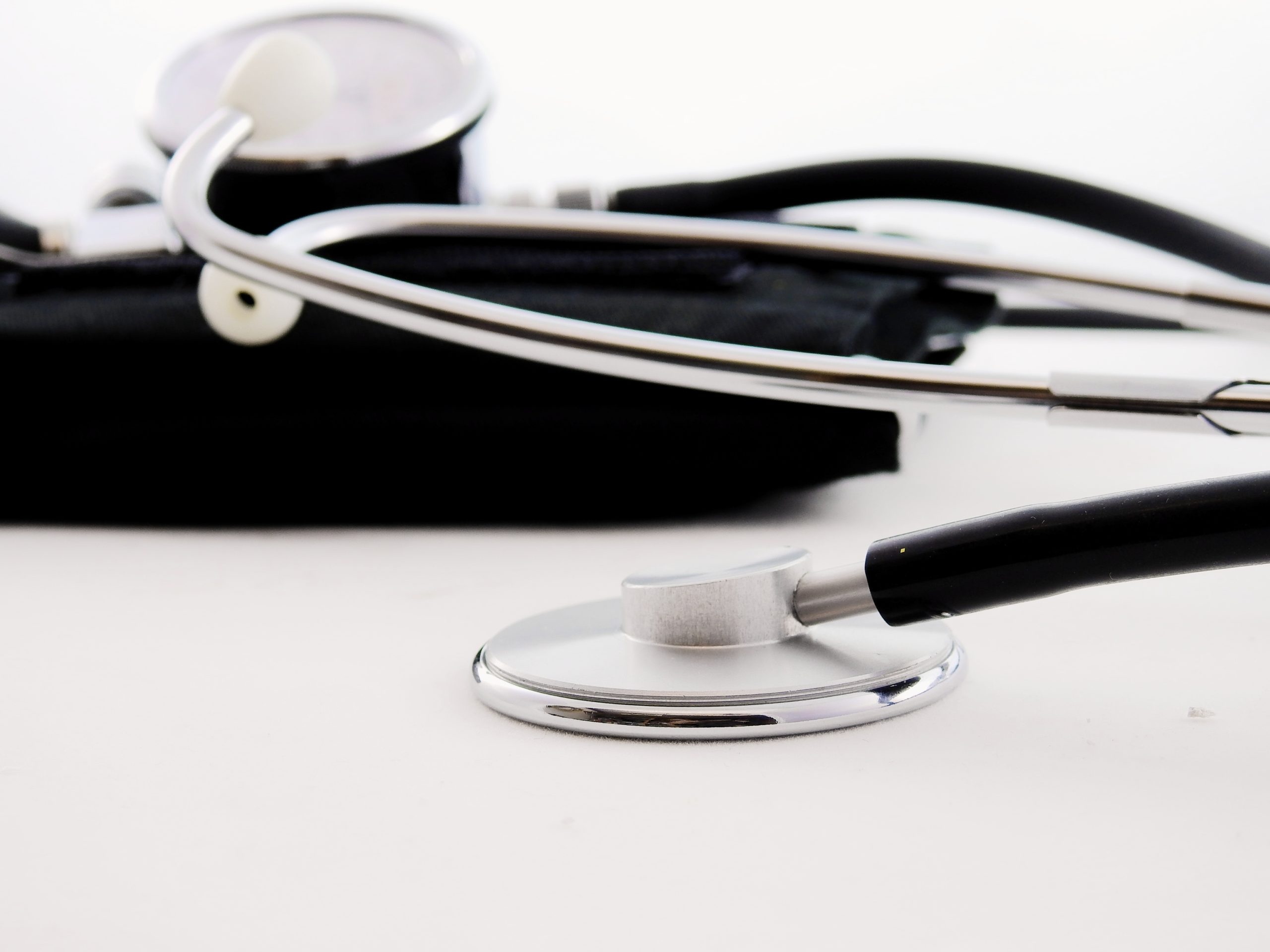Does fluorescent lighting make you feel a little…uncomfortable? Here’s how to block fluorescent lights at work.
If the fluorescent lights in your office cause you discomfort, you may have photophobia, or light sensitivity. You might find yourself blinking excessively or squinting to try to filter out some of that light.
Maybe your eyes begin to tear up. You may even get a headache or feel sick to your stomach. Whatever your symptoms, they can be uncomfortable, annoying, and inconvenient. They may even affect your ability to do your job.
Sadly, fluorescent lighting is pretty hard to avoid because it’s so prevalent. In this article, we’ll explore some of the ways you can block or filter fluorescent light, so you can manage your exposure and comfort level.
Fluorescent Lights Survey
To understand the effects of fluorescent lights, we took a survey of people with headaches and migraine. The 1688 responses we gathered help paint a picture of what fluorescent lights are like for people like you.
- 33% reported having severe limitations functioning under fluorescent lights
- 56% responded that bright lights provoke a headache “often” or “very often”
- 73% responded that bright light is very unpleasant during a headache
- 85% wear sunglasses to decrease headaches
If you work in an office, chances are you’re sitting underneath fluorescent lighting for 8 or more hours a day. Since turning off all the lights isn’t really an option, how can you block fluorescent lights at work?

How to Block or Dull Fluorescent Lights at Work
Option #1 Light Sensitivity Glasses
Much different from sunglasses or even computer glasses, fluorescent light glasses like Axon Optics with Avulux® lenses are made specifically for people with photophobia, and can help you block fluorescent lights at work and anywhere else they are found.
Instead of blocking all types of light the way sunglasses do, these lenses (made to help people with light sensitivity and migraine) block only the types of light most commonly associated with photophobia symptoms.
Clinical data shows Avlulux lenses to be effective as a light management tool, and thousands of users have seen results. “I have many patients who have had great success when I’ve recommended light sensitivity glasses over computer glasses designed to filter the blue light from screens. The light sensitivity glasses are better all the way around,” says Dr. Katz.
Dr. Katz’s statement is substantiated by a 2016 Harvard study which revealed that red and amber light (not just blue light) can trigger migraine attacks and that Avulux lenses block those specific wavelengths.
Avulux lenses are the only lenses clinically proven for this purpose. One customer, John, shares his story about finding relief from the fluorescent lights at his work:
“I was getting dizzy and headaches at work on a daily basis. I work at a hospital with all fluorescent lighting and white walls. After realizing that it was the lighting that was causing me a headache, I did some research online after becoming pretty desperate for some relief. I ordered a pair and since then they have worked great! Highly recommended.”
Option #2 Wide Brimmed Hats
While this can help to shade the eyes, it’s probably tough to find an office environment where employees are allowed to wear hats all the time (not to mention hat hair). So if you’re wondering how to block fluorescent lights at work, this might not be your best bet.
Option #3 Physical Barriers
To block fluorescent lights at work, many people try draping fabric over cubicle walls or even rigging up an umbrella. This might make your cubicle look like a million bucks (or not), but it won’t be an option for everyone. Aside from office rules, you and your office mates still need to be able to see.
Some physical barriers are known as diffusers. These are panels placed over fluorescent light fixtures to soften the light. They come in a variety of materials and are easy to install.
Option #4 Fluorescent Light Filters
Fluorescent light filters are thin sheets of material that can be attached to fluorescent light fixtures. Designed to alter the color of the light emitted, these filters may be used to reduce the harsh, cool-toned light that is commonly associated with fluorescent bulbs. This may result in a warmer, more natural-looking light.
Fluorescent light filters are purported to absorb or reflect certain wavelengths of light. Some are supposed to simply block blue light. Others are designed to enhance specific colors or create a particular ambiance. But do they work?
Well, maybe. That depends on the specific filter and the type of fluorescent bulb in the fixture. Some filters may have a minimal effect while others alter the light significantly. These filters can also reduce the overall brightness of the light, which might not be what you want.
Option #5 Screen Guards
If the glare on your computer screen exacerbates your problem, using a glare screen or shading device over your monitor could help ease your discomfort at the computer, but it won’t protect your eyes from overhead fluorescents.
Option #6 Dimmers
If you have control over your particular area and sit near a window, this could work well for you. But as adjusting the lighting may also affect those who sit near you, it might not be the most plausible solution.
Option #7 Natural Lighting
Using natural light to reduce your reliance on fluorescent lights can help you get some relief. If you can, try to relocate your desk near a window or skylight. But before you choose a spot, check the conditions at different times of day and from varying angles. At certain hours, you might get some glare off nearby buildings, which can be a problem for some people.

What NOT to Do
Sunglasses
While wearing sunglasses indoors might bring some short-term relief, it also causes your eyes to dark-adapt over time. This happens when your eyes grow accustomed to dim conditions, actually making them more light sensitive.
As you can imagine, this can cause even more discomfort. According to Dr. Katz, "We see dark adaptation all the time. For instance, when we come out of the movie theater in the middle of the day and face the bright sunlight it causes discomfort. Wearing sunglasses indoors has a similar effect."
If you’re tempted to wear sunglasses indoors, you should wear our light sensitivity eyewear instead; it won’t cause your eyes to dark adapt. Try them for 60 days.
Alternatives to Fluorescent Lights
There are several alternatives to fluorescent lights at work, particularly if you're in an office environment.
Options include:
- LED Lights: LED lights are energy efficient and can last up to 25 times longer than fluorescent lights. They can be dimmed and adjusted to different color temperatures. Keep in mind that even with temperature adjustments or warmer types of LED lighting, it still bothers some people and may not be the right choice for you. Many home improvement stores have displays where you can test out the different LED lighting options.
- Natural light: If possible, maximize the use of natural light to create a more comfortable and inviting work environment. You might consider adding skylights or extra windows.
- Task lighting: Task lighting such as desk lamps or floor lamps can provide targeted lighting for specific tasks and reduce the need for bright overhead lighting.
- Halogen lights: Halogen lights provide a warm and bright light that can be used in conjunction with other lighting sources. Used for 2 to 3 hours per day, halogen bulbs can last 2 to 3 years. Keep in mind that they tend to put out heat and may not be as safe as other types of light.
- Ceramic Metal Halide (CMH) is a type of high-intensity discharge (HID) lighting. It uses ceramic arc tubes and offers a more natural light spectrum. Its similarity to sunlight makes it popular for indoor gardening. It’s also used in commercial and industrial settings, like warehouses and sports arenas.
FAQs
Do blue light glasses help with fluorescent lights?
Unfortunately, simple blue light glasses won’t help. Only specific types of precision blue light filters could help, since fluorescent lighting emits large amounts of blue light throughout the blue light spectrum.
However, according to that 2016 Harvard study mentioned earlier, the types of light that are known to trigger migraine and light sensitivity are blue, red, and amber light. Meaning, blue light filtering lenses may not be enough. Instead, we recommend our clinically-proven Avulux light sensitivity lenses, which filters up to 97% of blue, red, and amber light.
How can I make fluorescent lights less harsh?
- If you’re in control of the lighting environment, such as at home, you can do away with fluorescent lights altogether. Switch to bulbs with a warmer color temperature to create a more natural and inviting lighting environment. Incandescent bulbs may be your best bet here. Stay away from bulbs labeled bright white or cool.
- If possible, add additional light sources such as lamps or the task lighting mentioned earlier. Indirect lights aimed upward or horizontally can also help. The additional lighting creates a more layered lighting environment, which can offset the harsh effects of fluorescent lights and make you more comfortable.
- Adjust the position of fluorescent lights: Sometimes adjusting the position of fluorescent lights can make a big difference. If you can, try positioning them in a way that reduces glare off surfaces and distributes the light more evenly.





